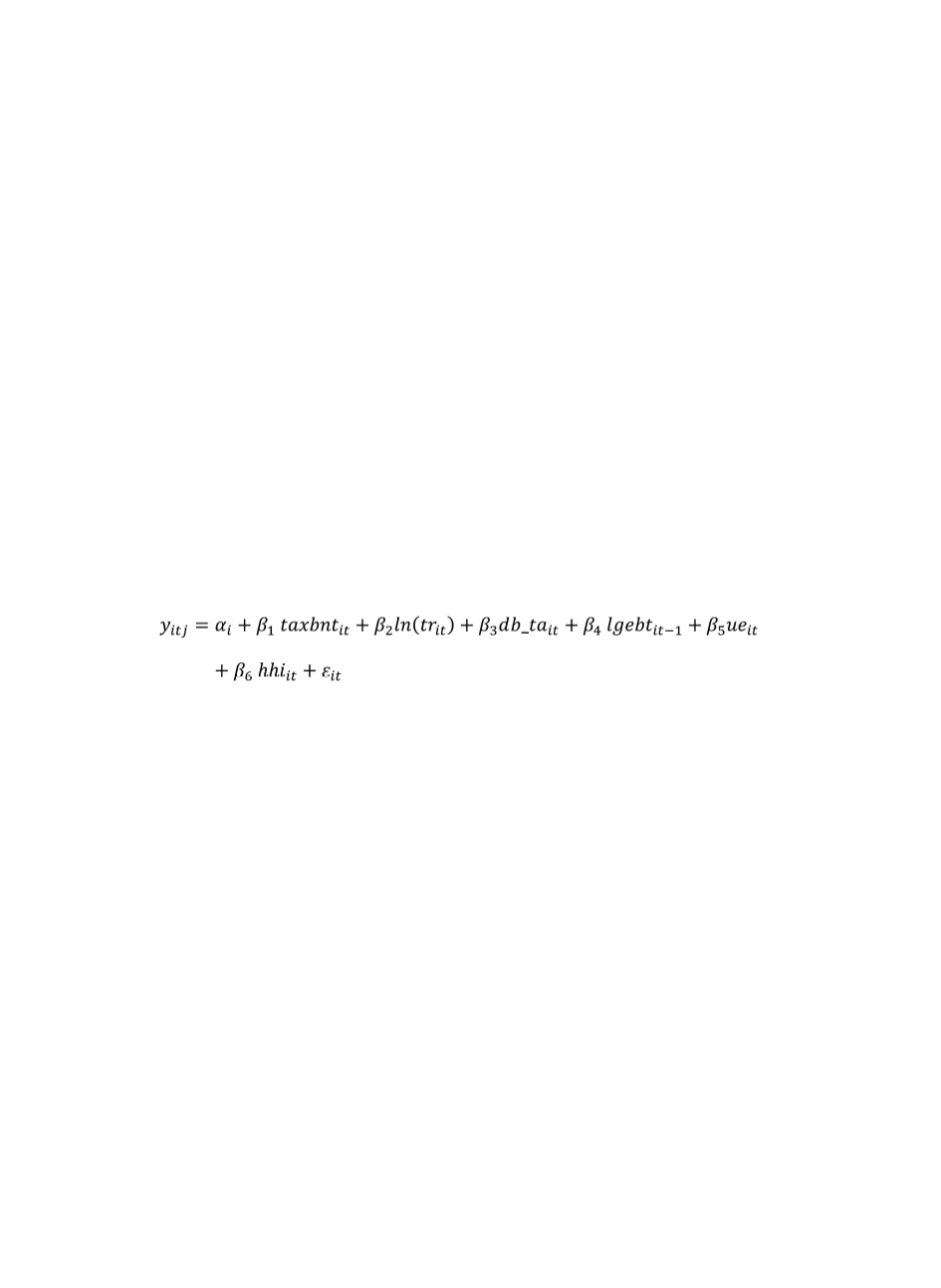

23
臺大管理論叢
第
28
卷第
2
期
between tax-exempt interest and the provision of community benefit service expenditure
of non-profit hospitals.
The financial data sources include: non-profit hospitals’ audited financial reports,
non-profit hospitals’ cadastral transcripts, government published land value, statistics from
Fiscal Information Agency, statistic database in county and city governments, and
statistics of medical institutions’ current status and medical service amount.
2.1 Variables of Hospital Tax-Exempt Interest
In this study, non-profit hospitals’ tax-exempt interest includes business income tax
exemption, land value tax exemption, and donation deduction. We estimated non-profit
hospitals’ tax-exempt interest caused by their tax-exempt status by computing the potential
tax burden which is the tax non-profit hospitals or donors would pay when no tax benefits
are granted.
The empirical model can be written as the following:
(1)
i
is the number of non-profit hospital (
i
= 1, 2,..., 43), and
t
is the year of
measurement (
t
= 2006, 2007, ..., 2010). The dependent variable
y
itj
is the expenditure of
i
th
non-profit hospital in
j
th
community benefit service during the year
t
. In this study, the tax
benefits (
taxbnt
it
) include business income tax, land value tax, and donation deduction; the
hospital financial characteristic variables include total revenue (
tr
), debt ratio (
db_ta
) and
prior year profit margin (
lgebt
); the market characteristic variables include local
unemployment rate (
ue
) and market concentration (
hhi
).
3. Findings
According to descriptive statistics, on average, educational research expenditure
accounts for over 70% of community benefit services spending, suggesting that non-profit
hospitals tend to invest in educational research activities. The empirical results suggest
that tax-exempt interest and educational research expenditure are significantly positively
correlated, while the relationship between tax-exempt interest and uncompensated care
services expenditure is significantly negatively correlated. The coefficient between tax-


















